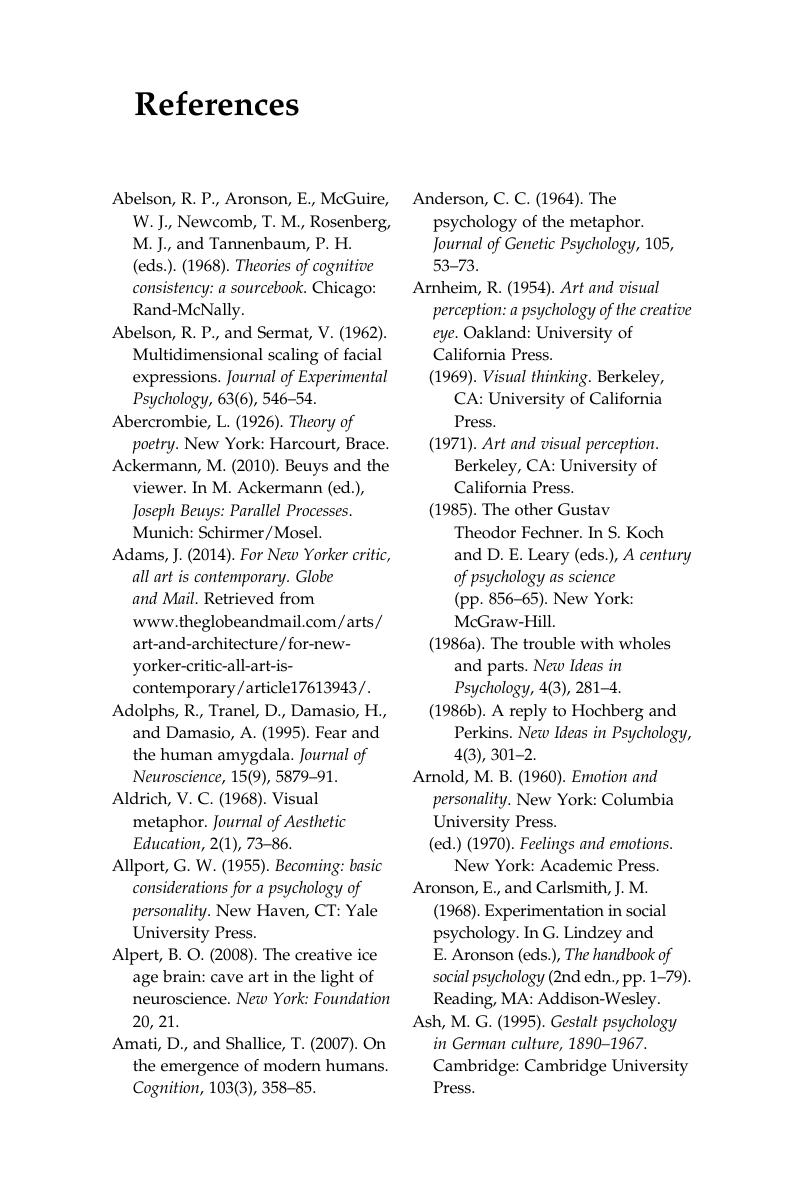Book contents
- The Aesthetics of Emotion
- Studies in Emotion and Social Interaction
- The Aesthetics of Emotion
- Copyright page
- Dedication
- Contents
- Figures
- Preface
- Acknowledgments
- Prologue
- Chapter 1 Experiences in life and in art
- Chapter 2 Thinking critically about emotion theories
- Chapter 3 The depth of affective processing
- Chapter 4 Emotional experiences as reactions
- Chapter 5 Antecedents of the motivational action models
- Chapter 6 Emotional Phase Theory
- Chapter 7 Neural underpinnings of emotional experiences and feeling-based actions
- Chapter 8 The aesthetic imagination
- Chapter 9 Affective processes and aesthetic reception
- Chapter 10 The “aesthetics of emotion” as analogy and metaphor
- Chapter 11 Creative practices of contemporary artists
- Chapter 12 The cave artist’s share
- Chapter 13 Studies in aesthetic reception
- Chapter 14 In search of a unified emotion theory
- Epilogue
- References
- Index
- Series page
- References
References
Published online by Cambridge University Press: 05 August 2016
- The Aesthetics of Emotion
- Studies in Emotion and Social Interaction
- The Aesthetics of Emotion
- Copyright page
- Dedication
- Contents
- Figures
- Preface
- Acknowledgments
- Prologue
- Chapter 1 Experiences in life and in art
- Chapter 2 Thinking critically about emotion theories
- Chapter 3 The depth of affective processing
- Chapter 4 Emotional experiences as reactions
- Chapter 5 Antecedents of the motivational action models
- Chapter 6 Emotional Phase Theory
- Chapter 7 Neural underpinnings of emotional experiences and feeling-based actions
- Chapter 8 The aesthetic imagination
- Chapter 9 Affective processes and aesthetic reception
- Chapter 10 The “aesthetics of emotion” as analogy and metaphor
- Chapter 11 Creative practices of contemporary artists
- Chapter 12 The cave artist’s share
- Chapter 13 Studies in aesthetic reception
- Chapter 14 In search of a unified emotion theory
- Epilogue
- References
- Index
- Series page
- References
Summary

- Type
- Chapter
- Information
- The Aesthetics of EmotionUp the Down Staircase of the Mind-Body, pp. 342 - 372Publisher: Cambridge University PressPrint publication year: 2016



